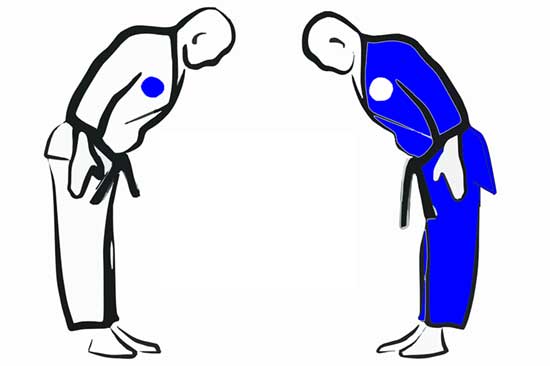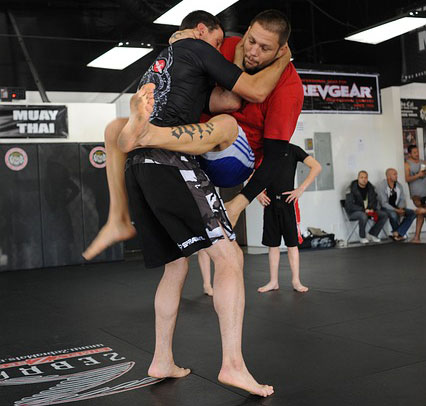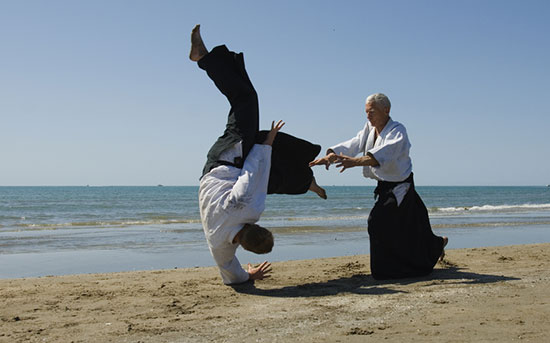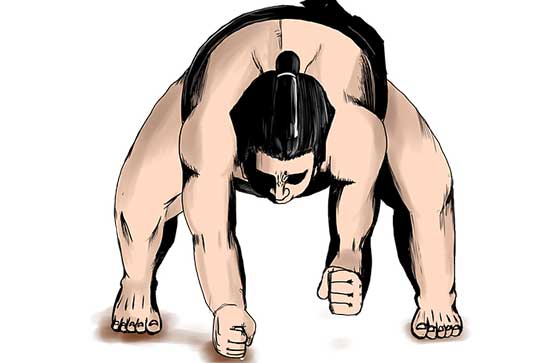Over the years, many people across the globe have been guilty of confessing to judo and Japanese jiu-jitsu, thinking they are the same. However, the two are not the same.
Judo and Japanese jiu-jitsu are both martial arts and combat sports but they have some distinct differences. For instance, how different techniques such as throws, chokeholds, and joint locks are executed in both martial arts is different. Additionally, Judo is meant for competition while Japanese jiu-jitsu is for self-defense and grappling.
In this article, we will discuss the difference between Japanese jiu-jitsu and judo.
Contents
What is Japanese jiu-jitsu?
Japanese Jui Jitsu is a martial art and combat sport that involves manipulating the opponent’s force against the practitioner as opposed to confronting it with one’s force.
Japanese Jui Jitsu is regarded as one of the oldest types of martial arts to be ever taught and played a big part in the development of Brazilian jiu-jitsu and judo.
Many historians believe that Japanese Jui Jitsu started among the Buddhist monk who used it as a way of self-defense.
Although this martial art is hundreds of years old, it still uses its original techniques and principles. It is often taught in a setting that is very traditional where discipline can adhere to the latter.
Japanese Jui Jitsu primarily focuses on self-defense by using techniques such as joint manipulation, throwing the opponent striking, blocking, and strangling.
A match in traditional Japanese Jui Jitsu involves three stages including the striking stage, grabbing stage, and grounding fighting. The match begins with the fighters fighting with strikes alone.
After a short time, strikes are stopped and the fighters are then only allowed to fight by grabbing. At this point, the fighters can take each other to the ground and utilize a few strategies such as strangulation and joint locks to make the opponent submit.
What is Judo?
Judo is generally regarded as a modern Japanese martial art. It was created in 1882 and has since evolved into an Olympic sport.
It is a dynamic combat sport that required both physical fitness and mental discipline. When standing, the judo technique involves lifting and throwing your opponent onto their back.
When the opponent is on the ground, you need to apply techniques that will pin him down control them and force them to submit.
Although many techniques used in judo were derived from martial arts that were designed to main, hurt, or even kill the opponent on the actual battlefield, those techniques have been greatly modified so that students can practice and apply them safely without hurting themselves or their opponents.
Unlike other martial arts that involve punching kicking, striking, and application of pressure, judo does not involve any of that. Instead, it simply involves two combatants who use power, the force of balance, and movement to subdue each other.
It is simple and easy to perform. However, mastering how to perform each technique correctly is often the most difficult part and it takes a considerable amount of energy, time, and effort.
Differences between Japanese jiu-jitsu and judo
Japanese Jui Jitsu is the oldest form of jiu-jitsu and began over 2500 years ago. On the other hand, judo is considered a modern Japanese martial art and was created in 1882.
Another big difference between these two martial arts is how different techniques are executed. In Japanese jiu-jitsu, techniques such as kick strikes, joint locks, throws, and strangulation holds are executed with the aim of maiming, harming, or killing the opponent.
On the other hand, how these techniques are executed in judo is not to harm the opponent but only for sports and competition.
Japanese jiu-jitsu strictly follows the original techniques and principles and is performed in a setting where discipline can be strictly adhered to.
On the other hand, location isn’t a big concern for judo. It can be performed anywhere provided you are under the guidance of a qualified instructor.
Judo was developed with the aim of peace and respect. That is why it is mainly used for sport and entertainment and does not involve the use of any kind of weapon.
Regarding Japanese jiu-jitsu, it was developed with aim of war and fighting. Most people practice Japanese jiu-jitsu for self-defense. It sometimes involves the use of a helmet smasher, knives, and weighted chains.
Summary of differences between judo and Japanese jiu-jitsu
| Japanese jiu-jitsu | Judo |
| Does not involve the use of any sort of weapon It involves the use of helmet smashers, knives, and weighted chains. | Judo only involves strangles, groundwork, and arm locks Japanese jiu-jitsu also involves blocks and strikes |
| It is structured but not part of the Olympics | Judo is more structured and part of the Olympics |
| It is a traditional form of martial arts. | It is a modern form of martial arts |
Conclusion
From the above discussion, it is clear that Judo and Japanese jiu-jitsu have many distinct differences. Japanese jiu-jitsu is a more aggressive type of martial art while Judo is easy and gentle.
Most people train Japanese jiu-jitsu for self-defense while judo is mainly practiced for competition. How various techniques are executed in both martial arts is different.
In judo, the techniques are executed to make the opponent submit while in Japanese jiu-jitsu, the main goal is to maim or harm the opponent.





